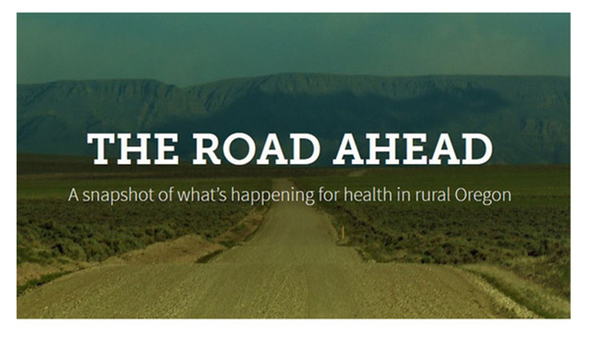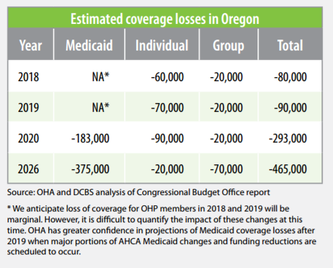The drastic impact
Oregon Department of Human Services sent this bulletin at 03/24/2017 09:18 AM PDT
Additionally, the report demonstrates the ways the AHCA will reshape the lives of Oregonians in 10 areas:
 A full copy of the report can be found at 95PercentOregon.com.
The road ahead for rural health
As health care continues to play an increasingly important
role in the everyday lives of Oregonians, the Oregon Health Authority has
debuted a new multimedia feature series diving into the impact of health care
in every corner of Oregon. The first installment is focused on rural Oregon and
the unique challenges and opportunities that exist outside Oregon’s
metropolitan areas. Below is a short excerpt from this new series and the full
story is here.
On a cold morning in January, a man with a wind-burnt face sits in front of large window at the Embers Grill in Joseph, Oregon. He wears muddy boots and a wool coat over a flannel shirt. Out the window, snow drifts reflect the sun and Wallowa Mountains. Above him a homemade flier reading “Save our Healthcare!” is taped to the wall announcing a local community meeting.
Asked to remain anonymous, he said that he works three jobs and sells firewood on the side to make ends meet. Noting that many of his neighbors work more than one job as well––calling it the “rural Oregon hustle”–– he lowers his head when he mentions that without the Oregon Health Plan, he and his neighbors would be without options for affordable healthcare if they were to get into an accident. Looking up at the healthcare flier, he said:
“This isn’t about politics or handouts. It’s about people working hard for a little peace of mind, knowing that an accident or the unexpected isn’t going to leave us homeless."
  State releases draft framework for new health-based air toxics standards
Agencies seek public input on Cleaner Air Oregon program to protect public health, environment
State officials this week released a set of proposed options, or framework, for revamping industrial air toxics regulations in Oregon. The draft framework outlines key decisions that will shape the state’s proposed rules for Cleaner Air Oregon––a program designed to protect the health of neighbors living near industrial facilities.
Washington, California and numerous other states already have adopted regulations for air emissions from industrial facilities that consider local health risk.
The draft framework was developed with extensive public input at four regional forums held across the state and discussions with technical experts and environmental, business, community and public health leaders.
Following review and revisions from the Cleaner Air Oregon Rules Advisory Committee, the proposed framework will be used to draft new regulations, which will be released for public comment later this summer.
The proposed Cleaner Air Oregon framework:
 Legislative update
Thursday the Oregon Senate passed SB 754, making it an offense to sell tobacco to anyone under 21.
In a 19-8 vote, the bill now goes to the House floor (read the story here). HB 2307 and HB 2309, both related to evaluating the mental fitness and
insanity of criminal defendants, also moved to the House floor earlier this
week. Last week the Legislature held a hearing about the requirements for coordinated care organizations (CCOs) in the future. OHA will continue to watch the development of legislation affecting the CCOs. In federal news, House leaders postponed a vote on the American Health Care Act––with an expectation that a vote could happen as early as today.
|





